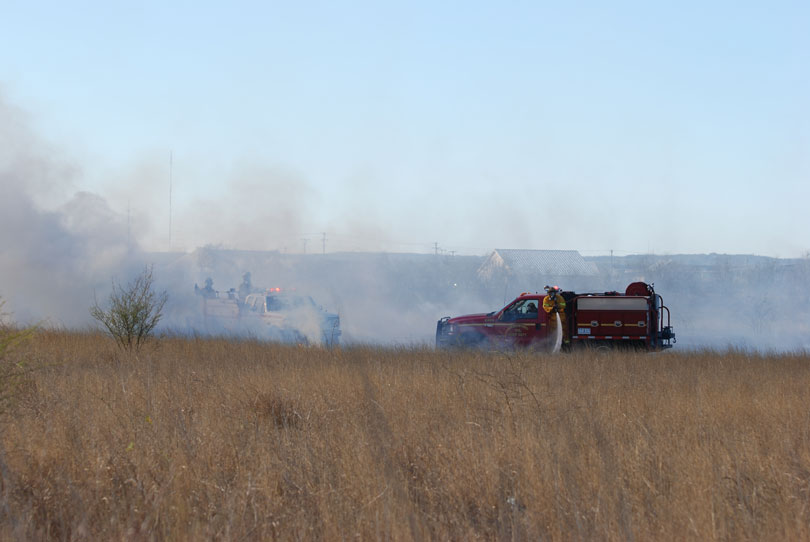By Jessica Domel
Multimedia Reporter
The Texas A&M Forest Service (TFS) is urging Texans to be mindful of an increased outdoor fire risk this time of year.
Over the past seven days, more than 100 wildfires have burned about 9,391 acres across Texas.
“Right now looking at Texas, you get in that area around DFW, west over to Midland, over Abilene as well, and north up in the Panhandle, Amarillo and Lubbock, it’s really dry, it’s really windy, and we have a lot of dormant grass on the ground,” Phillip Truitt, TFS communications specialist, said. “We had some good rain last year, and we had a good growing season, but all that grass now is sitting there. It’s dormant, and it’s ready to burn.”
Everyone is encouraged to look around their home for places that might increase a fire risk.
“I think one of the biggest things in mitigating your risk is creating what we call a defensible space around your structures–whether it be a barn or a home–and that’s that a zero to 30 foot space around that building,” Truitt said. “What you do there is you keep that grass mowed pretty short. You have your trees trimmed up six to nine feet above the ground. You even move wood piles and other debris away from the structures. That allows firemen to get in there and protect those structures.”
Smokers are encouraged to keep their cigarette butts inside the vehicle to prevent wildfires on the side of the roadway.
“Make sure your tires are properly inflated, and they’re high quality–that they’re not ready to blow out, rotting or anything like that because that will cause a fire,” Truitt said. “The other thing is your safety chains for your trailers. Every trailer has those safety chains. Make sure those chains aren’t hitting the ground. A lot of our fire starts are from safety chains that are too long. They’re dragging on the ground and creating those sparks on the side of the road.”
As of Friday morning, 98 Texas counties have already implemented burn bans due to dry weather conditions and an increased risk of wildfires.
“Be aware of your conditions. Follow the local (weather) and National Weather Service. See what the forecast is saying,” Truitt said. “On a day with red flag conditions with high winds and low humidity, maybe hold off on the welding for one more day if you can. If you have to weld during these dry conditions or do other work like that, if you have the ability, have a spotter. Have somebody with you that could spot the fire if one appears, and help you out. The other thing is to have water there to be able to put a fire out if one starts.”
Landowners are also encouraged to get to know their local paid and volunteer fire personnel.
“Go talk to them. Tell them what you have on your property. Let them know if you’ve done some mitigation work around your property, or you have tanks that they can draft from to get water, or if you want to show them around,” Truitt said. “If you’ve got several thousand acres of land, you may want to show them where you have fire breaks at. Start that contact so if there is a big fire, they know who you are, and they know what’s on your property and know how to help you.”
Increased fire risk will continue for most of Texas throughout the winter and early spring–especially on days with low humidity and high wind.
TFS has additional fire tips as well as information on local resources and the current fire situation at http://texasforestservice.tamu.edu/.

